The basilica of Santa Maria in Cosmedin is one of the best examples of medieval ecclesiastic architecture in Rome. The church is especially renowned for its beautiful Cosmatesque artwork.
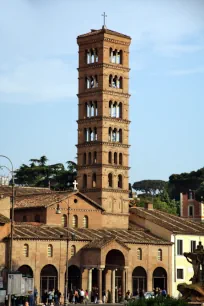
The basilica sits at the Forum Boarium, the ancient cattle market. Many visitors flock here to see the famous Bocca della Verità, a large marble disc that was used in the Middle Ages as a lie detector.
History
The history of the church of Santa Maria in Cosmedin goes back to the sixth century when a small church was built at the site of Statio Annonae, the administrative office of the grain market. In this area stood several temples, including the ancient Temple of Ceres and Proserpine. An ancient altar dedicated to Hercules, the Ara Maxima Herculis, was located right behind the temple.
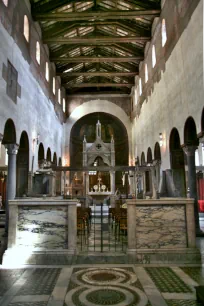
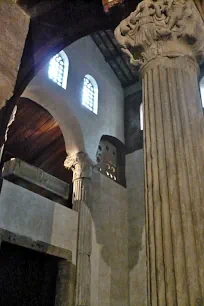
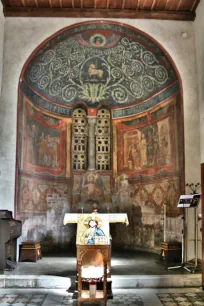
The small church was originally known as the ecclesia graecorum (Greek church), a reference to the Greek and Byzantine monks who served here.
In the eighth century, the church was expanded by pope Adrian I. Both the Temple of Ceres and the Altar of Hercules had to make way for the expansion. Remains of the crumbling temple were incorporated into the new apse. The basilica now had three naves instead of a single one. The interior was so magnificent that the church was given the name Cosmedin, a word that was derived from the Greek word for jewel.
The portico we see today was built in the twelfth century. The tall bell tower dates from the same period.
In the early eighteenth century, many Baroque elements were added to Santa Maria in Cosmedin, including a new facade, designed by Giuseppe Sardi and added in 1781. However, the Baroque additions were removed around the turn of the twentieth century and the church’s original look was restored.
Interior
Two rows of nine ancient pillars separate the central nave from the aisles. The wide nave and smaller aisles all end in semicircular apses. The pillars were recycled from the Statio Annonae.
The interior work done by the Cosmati – a Roman family of skillful architects, sculptors, and tile workers – is incredible. The pavement, choir enclosure, pulpit, the twisted paschal candlestick, and the altar screen were all done by the family in the twelfth and thirteenth centuries. Of special note is the baldachin, done in Gothic style with Cosmatesque decoration. It is dated to 1294 and signed by Deodato di Cosma.
A rare eighth century mosaic sits in front of the high altar. Another mosaic, of the Adoration of the Magi, is displayed in the sacristy. This mosaic was originally created in 706 for the chapel of John VII in the first St. Peter’s Basilica.
Bocca della Verità
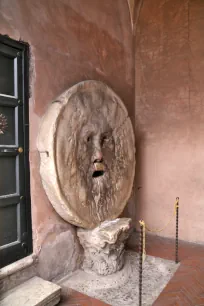
While the church is ripe with reasons to visit – in particular to view the work of the Cosmati – many people only come here to see the famous Bocca Della Verità, or «Mouth of Truth». Located in the portico of the church, this manhole of sorts is thought to have been part of an ancient Roman temple and the face is believed to be that of the god Oceanus.
Over the years, the Bocca Della Verità has assumed the role of lie detector. Beginning in the Middle Ages, it was believed that if one told a lie with his hand in the mouth of the sculpture, it would be bitten off.
- Next: Via Giulia
- More Sights & Attractions in Rome

